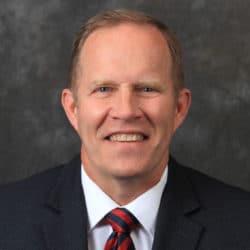
Losses can be used, within certain limits, to offset other highly-taxed income, such as salary from a job. However, in general, losses from “passive” activities can only be used to offset income from other passive activities. Any excess passive loss is suspended and must be carried forward to future years.
The tax law generally defines a passive activity as a trade or business in which you don’t “materially participate.” The IRS has established various tests for determining whether someone qualifies as a material participant. For instance, if you participate in the activity for more than 500 hours during the year, you’re generally treated as a material participant in that particular activity.
Here is a court case in which the taxpayer was successfully able to avoid the passive activity loss (PAL) restrictions.
Taxpayer Groups Activities Together
Suppose you own two business operations that are closely-related. If the activities comprise an economic unit, they might be able to be grouped together for application of the PAL rules.
In one case, a taxpayer formed a limited partnership and a limited liability company (LLC). The limited partnership provided radiological services to the general public, while the LLC rented medical imaging equipment to the limited partnership’s medical practice. For the tax years in question, the taxpayer offset the passive losses passed down to him through the LLC against the net income received from his interest in the limited partnership.
Normally, the taxpayer would not be able to offset the income received from the limited partnership with the passive losses from the LLC. But the tax law allows a taxpayer to combine income and losses from rental activities with a trade or business activity if:
- The combined activities constitute an “appropriate economic unit” and
- The rental activity is “insubstantial” in relation to the business activity.
The District Court agreed with the taxpayer on both counts. Result: The activities could be grouped together for purposes of the PAL rules. (Candelaria, DC-Tex., 10/5/07)
In another case with a similar fact pattern, the U.S. Tax Court allowed the taxpayer to group an aviation business operated as an S corporation with a leasing activity. (Schumacher, TC Summary Opinion 2003-96)
The principal activities of the aviation business were flight training, aircraft rental, charter services, and aircraft sales.
The sole issue, the U.S. Tax Court said it must decide in the case, “is whether the leasing activity is insubstantial in relation to the (aviation) activity” under the tax law. The court found that it was. Therefore, the taxpayer could group the leasing activity with the aviation activity, and effectively deduct the losses incurred by the leasing activity.
Passive activity losses are a complicated area of the tax code and the combining of activities in order to deduct losses has many nuances.
PAL Basics
Prior to 1986, a taxpayer could generally deduct losses in full from rental activities and trades or businesses regardless of his or her participation. Then, the Tax Reform Act of 1986 added Internal Revenue Code Section 469, which limits the taxpayer’s ability to deduct losses from businesses in which he or she doesn’t materially participate and from rental activities.
As a general rule, the passive activity loss rules are applied at the individual level. Although Internal Revenue Code Section 469 was enacted to discourage abusive tax shelters, its impact extends far beyond shelters to virtually every business or rental activity whether reported on Schedules C, F, or E, as well as to flow-through income and losses from partnerships, S Corporations, trusts and personal service corporations. Generally, the law does not apply to regular C Corporations although there are limited applications.
Contact Tom Bailey with any questions via our online contact form.
Councilor, Buchanan & Mitchell (CBM) is a professional services firm delivering tax, accounting and business advisory expertise throughout the Mid-Atlantic region from offices in Bethesda, MD and Washington, DC.



